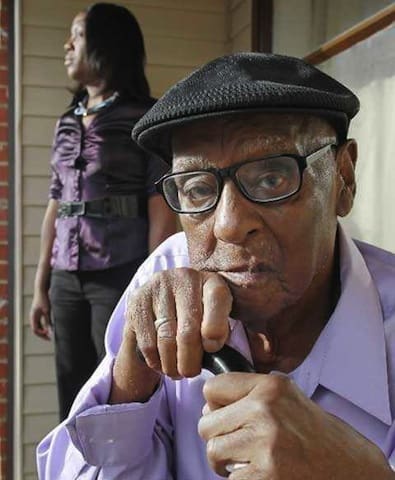Fom the star-telegram.com
In the waning days of July 1910, racial hatred ignited around this East Texas village. Bands of white residents took up rifles and shotguns and hunted down and slaughtered African-Americans. When it was over, estimates of the black dead ranged from eight to 20 or more. All of the known victims were unarmed and most were shot in the back, authorities said at the time.





East St. Louis, Tulsa, Rosewood . . . . the list goes on and on.
Thanks for including this, Robert. But I have to ask … why that particular heading? Isn’t racism the primary problem here? I know this is a gun blog, but I don’t believe that every social issue in this country is reducible to the Second Amendment.
rlovee
Clayton Cramer has an excellent piece here: http://www.ctsportsmen.com/news/racist_roots_of_gun_control.htm
The intersection of Jim Crow laws and gun control laws was not by accident:
” I desire to give some special attention to some of the authorities cited, supreme court decisions from Alabama, Georgia, Arkansas, Kentucky, and one or two inferior court decisions from New York, which are given in support of the doctrines upheld by this court. The southern states have very largely furnished the precedents. It is only necessary to observe that the race issue there has extremely intensified a decisive purpose to entirely disarm the negro, and this policy is evident upon reading the opinions. [33] “
Ok got it. Thanks for filling in where RF was implicit.
If you want more stories like this, read the Thomas concurrence in the McDonald case. Eg:
Take, for example, the Hamburg Massacre of 1876. There, a white citizen militia sought out and murdered a troop of black militiamen for no other reason than that they had dared to conduct a celebratory Fourth of July parade through their mostly black town. The white militia commander, “Pitchfork” Ben Tillman, later described this massacre with pride: “[T]he leading white men of Edgefield” had decided “to seize the first opportunity that the negroes might offer them to provoke a riot and teach the negroes a lesson by having the whites demonstrate their superiority by killing as many of them as was justifiable.” S. Kantrowitz, Ben Tillman & the Reconstruction of White Supremacy 67 (2000) (ellipsis, brackets, and internal quotation marks omitted). None of the perpetrators of the Hamburg murders was ever brought to justice.22
Organized terrorism like that perpetuated by Tillman and his cohorts proliferated in the absence of federal enforcement of constitutional rights. Militias such as the Ku Klux Klan, the Knights of the White Camellia, the White Brotherhood, the Pale Faces, and the ’76 Association spread terror among blacks and white Republicans by breaking up Republican meetings, threatening political leaders, and whipping black militiamen. Era of Reconstruction, 199-200; Curtis 156. These groups raped, murdered, lynched, and robbed as a means of intimidating, and instilling pervasive fear in, those whom they despised. A. Trelease, White Terror: The Ku Klux Klan Conspiracy and Southern Reconstruction 28-46 (1995).
Although Congress enacted legislation to suppress these activities,23 Klan tactics remained a constant presence in the lives of Southern blacks for decades. Between 1882 and 1968, there were at least 3,446 reported lynchings of blacks in the South. Cottrol 351-352. They were tortured and killed for a wide array of alleged crimes, without even the slightest hint of due process. Emmit Till, for example, was killed in 1955 for allegedly whistling at a white woman. S. Whitfield, A Death in the Delta: The Story of Emmett Till 15-31 (1988). The fates of other targets of mob violence were equally depraved. See, e.g., Lynched Negro and Wife Were First Mutilated, Vicksburg (Miss.) Evening Post, Feb. 8, 1904, reprinted in R. Ginzburg, 100 Years of Lynchings 63 (1988); Negro Shot Dead for Kissing His White Girlfriend, Chi. Defender, Feb. 31, 1915, in id., at 95 (reporting incident in Florida); La. Negro Is Burned Alive Screaming “I Didn’t Do It,” Cleveland Gazette, Dec. 13, 1914, in id., at 93 (reporting incident in Louisiana).
The use of firearms for self-defense was often the only way black citizens could protect themselves from mob violence. As Eli Cooper, one target of such violence, is said to have explained, ” ‘[t]he Negro has been run over for fifty years, but it must stop now, and pistols and shotguns are the only weapons to stop a mob.’ ” Church Burnings Follow Negro Agitator’s Lynching, Chicago Defender, Sept. 6, 1919, in id., at 124. Sometimes, as in Cooper’s case, self-defense did not succeed. He was dragged from his home by a mob and killed as his wife looked on. Ibid. But at other times, the use of firearms allowed targets of mob violence to survive. One man recalled the night during his childhood when his father stood armed at a jail until morning to ward off lynchers. See Cottrol, 354. The experience left him with a sense, “not ‘of powerlessness, but of the “possibilities of salvation” ‘ ” that came from standing up to intimidation. Ibid.
Comments are closed.